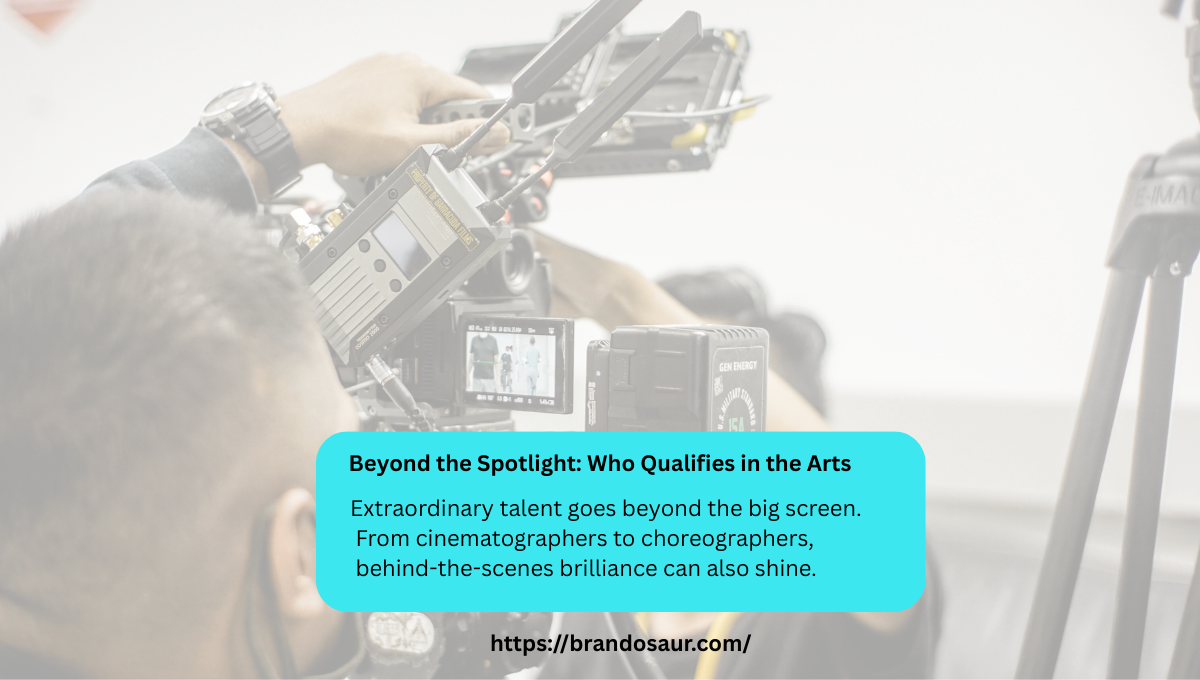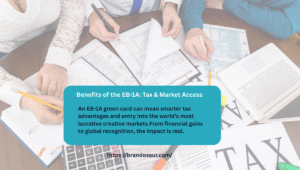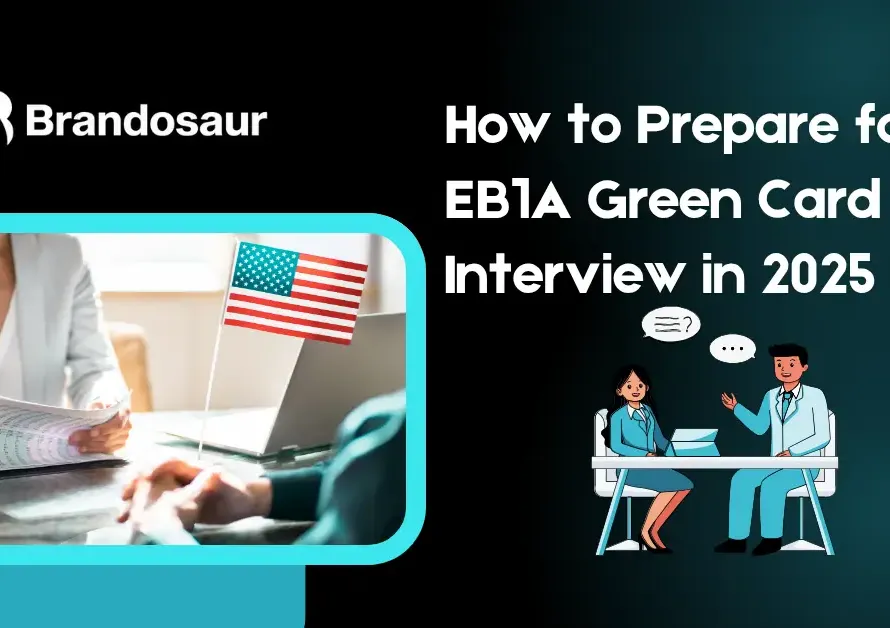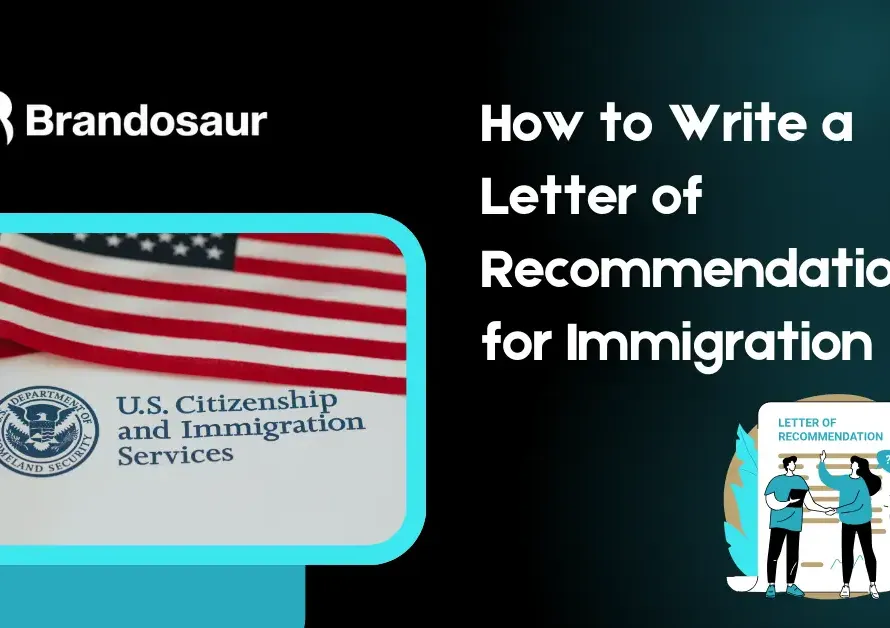Green Card EB-1A for Artists and Entertainers: How to Build a Strong Case
- Brandosaur
- August 14, 2025
- 10:28 am
Obtaining an EB-1A visa, the U.S. “Alien of Extraordinary Ability” green card, can be a game-changer for artists and entertainers. This category offers permanent residency in the United States to individuals with extraordinary ability in their field, whether they’re actors, athletes, editors, cinematographers, musicians, filmmakers, or digital creators. Unlike many other employment-based visas, EB-1A does not require a job offer or employer sponsor, which allows you to self-petition based on your own accolades.
It’s a challenging path: in 2024, about 68% of EB-1A applications from artists were approved, meaning roughly one in three were denied. To ensure you’re in the successful group, you need to build an exceptional case that showcases your extraordinary ability and global recognition. This guide will walk you through how to do exactly that, in a professional yet conversational tone, so you can confidently put forward a winning green card for artists petition.
Defining Your Professional Identity for the EB-1A Visa Petition
The foundation of a successful EB-1A visa petition is a clear and focused professional identity. U.S. Citizenship and Immigration Services (USCIS) adjudicators look for a consistent narrative of your career. If you wear multiple hats, say, you’re a filmmaker and a software developer, it’s crucial to center your EB-1A case around the one field where you have achieved the highest acclaim. Being a “jack of all trades” can dilute the impact of your petition. Instead, highlight a specific niche in which you excel so that the reviewing officer can easily understand what you “do best” and why you’re among the elite in that domain.
Examples of a Strong Professional Identity
- Production Manager on an Oscar-winning film
- Award-winning makeup artist in the film industry
- Composer of scores for internationally acclaimed television series
In each of the above examples, the applicant’s EB-1A petition would focus squarely on the role tied to their greatest accomplishments. By contrast, if you present yourself as a producer/director/actor all at once, it may confuse the narrative. Align your petition with the identity that’s backed by your most notable achievements. Consistency makes it easier for officers to evaluate your eligibility and be convinced of your extraordinary ability in a given field.

Beyond the Spotlight: Who Qualifies Outside of Acting?
Many people assume the EB-1A is reserved for A-list movie stars or famous directors. In reality, the EB-1A visa can apply to a wide range of creative professionals, including those behind the scenes, as long as they can demonstrate top-tier achievement. Even if you’re not a household name, you may qualify if you have garnered significant industry recognition. Roles that could qualify under extraordinary ability in the arts include:
- Cinematographers and film editors
- Production designers and art directors
- Animators and visual effects supervisors
- Costume and fashion designers for productions
- Music producers, composers, and background score composers
- Choreographers and principal dancers
- Makeup and prosthetic artists on award-winning projects
Don’t be discouraged if you’re not in front of the camera or on stage; a green card for artists isn’t limited to superstars. A cinematographer with films featured at Cannes or an editor of an Oscar-winning movie can be just as strong a candidate as an actor with a leading role. The key is that you have extraordinary ability, evidenced by peer recognition. Working on high-visibility projects (such as a film that wins an Academy Award or headlines a major festival) can serve as compelling evidence of your standing in the field. USCIS cares about impact and recognition, not just job titles.

EB-1A Criteria for Artists and Entertainers
To succeed in an EB-1A case, you must persuade USCIS that you are among the tiny fraction of people at the very top of your field. The official requirement is that you show either a one-time major international award (think Oscar, Grammy, or similar) or provide evidence for at least 3 out of 10 specific criteria set by USCIS. Most artists and entertainers don’t have a single Nobel Prize-level honor, so in practice, you’ll be aiming to meet multiple criteria with your body of work.
Below is a breakdown of the EB-1A extraordinary ability criteria and how you, as an artist or entertainer, can fulfill them:
EB-1A Criteria | Examples of Evidence for Artists & Entertainers |
National or International Awards: Proof of lesser nationally or internationally recognized prizes or awards for excellence. | E.g., Won a respected film festival award, music award, or art competition in your country or internationally. |
Elite Memberships: Membership in associations that require outstanding achievements. | E.g., Member of a prestigious guild or academy (by invitation or vetting), such as an Academy of Motion Picture Arts and Sciences invite or a national artists’ guild requiring proven excellence. |
Published Material About You: Articles or media coverage about your work in major publications. | E.g., Featured profile or interview in a leading industry magazine, major newspaper, or well-known art journal highlighting your accomplishments. |
Judge of Others’ Work: Participation on a panel or jury judging the work of others. | E.g., Served as a jury member at an international film festival, judge for a national music competition, or panelist selecting winners for an art award. |
Significant Contributions: Original contributions of major significance in the field. | E.g., Pioneered a new technique or genre in your art form, significantly influenced trends or practices in your industry, or developed a notable creative method that peers have adopted. |
Scholarly Articles: Authorship of scholarly articles in professional or major trade publications. | E.g., Published an article on filmmaking techniques in a top film journal or wrote a paper on music theory in a renowned industry publication. |
Exhibitions or Showcases: Display of your work at artistic exhibitions or showcases. | E.g., Your artwork exhibited at a famous gallery or museum, or your films screened at high-profile international festivals, or your invited performances on distinguished stages. |
Leading or Critical Role: Played a leading or critical role for organizations or projects of distinguished reputation. | E.g., Principal dancer in a nationally acclaimed ballet company, lead designer for a top fashion house’s show, or director of a critically acclaimed production for a renowned studio/theater. |
High Salary or Remuneration: Commanded a high salary or pay significantly above others in the field. | E.g., Among the top-paid in your profession, such as headlining concert tours with high earnings or receiving substantially higher fees than peers for performances or creative work. |
Commercial Success in the Arts: Commercial successes in performing arts (films, music, etc.). | E.g., A track record of box office hits or music sales. For instance, your film grossed significant revenue, your album went gold/platinum, or your streaming content garnered millions of paid views. |
To win an EB-1A visa case, you’ll need to provide strong documentation for at least three of the above categories (or submit evidence of a one-time major award). The stronger and more objective your evidence, the better. For example, press articles from reputable outlets or actual award trophies/certificates will carry more weight than just personal testimonials.
It’s also important to show continued work in your field; you must demonstrate that you intend to keep contributing your talents in the U.S. For instance, you can include a letter from a prospective employer or client, or a personal statement outlining upcoming projects in America. This assures USCIS that granting you the green card will benefit the U.S. arts scene going forward.
Tip: Letters of recommendation from important figures in your industry can support your case, but they are not sufficient on their own. Use them to reinforce objective evidence, not replace it.
Country Trends in EB 1A Application for Artists
Artists from all over the world apply for the EB-1A, and while talent is universal, the paper trail of that talent can differ by country. Notably, a significant number of successful EB-1A applicants in entertainment hail from countries like the UK, Canada, and Australia, which have robust film and music industries and a strong presence in Hollywood. British actors and creators, for example, often enter the U.S. with solid portfolios and international press already under their belt. In 2023, USCIS approved over 4,000 EB-1A petitions in the arts and entertainment sector (a 9% increase from 2021), reflecting growing global interest, with many applicants coming from major entertainment hubs.
By contrast, talented individuals from countries with emerging entertainment industries (for instance, Nepal, Ghana, Kenya, and Nigeria) may have extraordinary skills but less formal documentation. If you’re from a region where media coverage and awards for your art are harder to come by, you’ll need to be extra proactive in curating evidence of your achievements. It’s possible to succeed; just recognize that you might have to create your own spotlight to some extent. We’ll discuss how to do that next.

Closing Documentation Gaps: Strengthening Your Case
Unlike scientists or academics, many artists and entertainers don’t accumulate tidy evidence of their acclaim early in their careers. You might have been busy performing or creating, without thinking to save that newspaper clipping or high-quality photo from your gallery show. Building a strong EB-1A case means identifying and filling any gaps in your documentation. Here are steps to bolster your evidence portfolio:
1) Gather Historical Proof
Collect any and all items that validate your achievements: award certificates, nomination letters, old playbills or show brochures listing you, screenshots of online articles mentioning you, etc. Dig into your past work and archive anything that shows recognition or excellence (even local awards or niche press can help establish a pattern of acclaim).
2) Establish an Official Online Presence
Create a professional website or portfolio that showcases your biography, credits, and press. A personal website not only impresses immigration officers but also often ranks in Google, which they may notice when researching your background. It centralizes your story and accomplishments in one credible place.
3) Leverage Platforms like Wikipedia
If you or your work meet Wikipedia’s notability standards, having a Wikipedia page can be a boon. A Wikipedia entry with citations to independent sources instantly signals that you have public recognition. While not everyone will qualify for a Wikipedia page, if you do, it’s a highly visible validation of your career.
4) Maintain a Strong Social Media Profile Presence
In today’s digital age, your follower counts, view counts, and online influence can reinforce your impact. Make sure your professional social media accounts (Instagram, YouTube, LinkedIn, etc.) highlight major milestones. For example, if you directed a short film that got 2 million YouTube views or you have 100k followers interested in your art, that’s evidence of your influence.
5) Document Invitations & Participations
Keep records of any invitations to judge competitions, speak on panels, exhibit your work, or perform at notable events, even if you couldn’t accept them. An invitation itself shows that peers see you as an authority or talent. If you did participate, save thank-you letters or programs that mention your name. These illustrate your standing in the community.
In addition to the above, consider obtaining recommendation letters from prominent figures who can attest to your achievements. A detailed letter from a known director, producer, or industry leader praising your work can underscore the significance of your contributions. Just remember that such letters should correlate with hard evidence; they add context and credibility, but they aren’t a substitute for tangible proof of your success.
6) Influence Matters: Leverage Your Online Reach
In the arts, influence and reach are modern markers of success. If you have a strong online presence. For instance, a YouTube channel with millions of views or an Instagram account with a large engaged audience, highlight this in your petition. High subscriber or follower counts, viral content, or notable collaborations with other influencers can demonstrate that your work has a significant impact and a following.
Social media fame alone isn’t one of the ten criteria, but it can support elements like commercial success or signify the recognition of your achievements indirectly. It paints a picture of an artist who is shaping trends or reaching audiences on a large scale, which bolsters the case that you are extraordinary in your field.

Publishing & Thought Leadership to Demonstrate Expertise
A less obvious way artists and entertainers can strengthen an EB-1A case is by showcasing thought leadership through writing or speaking. Authoring articles, essays, or even blog posts on industry topics can fulfill the criterion of scholarly articles or show original contributions. For example, a film director might write an op-ed about the impact of independent film movements on modern cinema, or a painter could publish an article on the societal role of art in a respected art magazine. By publishing insightful content on credible platforms, you position yourself as an expert and leader in your craft.
Similarly, delivering talks or lectures at conferences, festivals, or academic institutions can be valuable. If you’ve spoken at a panel at Sundance, given a guest lecture at an art school, or been invited to discuss your craft on an industry podcast, mention it. These activities demonstrate that your expertise is sought after and that you’re contributing knowledge to your field. In an EB-1A petition, being seen as a thought leader reinforces the idea that you’ve achieved a level of distinction that few others have.
Social Media Influencers & the EB-1A Visa Eligibility
What if your achievements are primarily in the digital realm? For example, you’re a YouTuber, TikTok creator, or other social media influencer. You might not have traditional awards or academic publications, but you can still qualify for EB-1A with a creative approach to evidence. Here are strategies for influencers and digital creators to meet the extraordinary ability criteria:
1) Create Your Own Accolades
Traditional awards for content creators are emerging (e.g., YouTube’s Gold Play Button for 1M subscribers isn’t an official award, but it’s a recognition of scale). You might even start a formal organization or awards event in your niche to recognize excellence; being a founder or recipient of such an award could be used as evidence of contributions or awards.
2) Show Monetization & Sponsorship Metrics
Demonstrate your commercial success by providing data on earnings and partnerships. For instance, document your revenue from streams, ad partnerships, sponsorship deals, or merchandise sales. High income relative to others in your space can satisfy the high remuneration criterion, and successful sponsorships indicate recognition by brands of your talent’s value.
3) Highlight Press & Collaborations
Even if you’re “internet famous,” make sure to obtain coverage in traditional media as well. A feature in an online magazine or a news article about your viral success helps check the “published material about you” box. Likewise, collaborations with well-known artists or companies (for example, a famous musician featuring you in a video or a partnership with a known studio) can serve as industry recognition.
4) Engage in Industry Events
Participate in judging, panels, or speaking opportunities related to your digital field. For example, if you’re a prominent cosplay artist on social media, getting invited to judge a cosplay contest at a major convention or speak at a digital media conference would be strong evidence. Even in new media, the traditional markers of esteem, being asked to judge others’ work or share expertise, still apply.
For social media stars, the key is to map your non-traditional achievements to the EB-1A criteria creatively. You may need to curate your narrative more deliberately, perhaps even more than a traditional artist would, but with the right documentation, you can show that you have a level of talent and recognition that rises to the level of “extraordinary.”

O-1 vs. EB-1A: Making the Right Choice
As you build your case, it’s worth understanding the difference between the O-1 visa (for extraordinary ability in arts, among other fields) and the EB-1A green card. Both are meant for top-tier talent, but they serve different purposes and have distinct advantages:
1) O-1 Visa (Temporary Status)
The O-1 is a non-immigrant visa for individuals with extraordinary ability in areas like arts, film, TV, etc. It requires a U.S. employer or agent to sponsor you and is typically tied to specific work projects or gigs. O-1 status can be renewed indefinitely (in 1- to 3-year increments) as long as you have work, but it does not lead directly to a green card. For many artists, the O-1 is a common starting point.
For example, a talent agency might help a foreign actor or cinematographer get an O-1. However, keep in mind that an O-1 tethered to one employer can limit your flexibility, and major studios or organizations may only sponsor O-1s for very prominent roles.
2) EB-1A Green Card (Permanent Residency)
The EB-1A is an immigrant visa, essentially a green card, so it grants permanent resident status. The huge benefit is that you can self-petition; you don’t need an employer at all, now or in the future. This freedom means once you have the EB-1A green card, you can work with any number of companies or projects (or even be self-employed) without immigration constraints.
Many creatives pursue EB-1A after first building their resume on O-1 status. While the EB-1A has a higher standard to meet, it offers long-term stability and a path to U.S. citizenship, unlike the O-1. It essentially puts you in control of your own artistic career in the U.S., with no need to constantly renew visas or depend on a sponsor’s whim.
In short, the O-1 can be a good interim solution if you’re not yet ready for a green card case or only plan a short-term stay. But EB-1A is the ultimate goal for those who want a lasting base in the U.S. creative industry. In fact, some savvy artists use time on an O-1 to build up their credentials (more awards, press, etc.), then apply for EB-1A when they have a stronger profile. Consider your career needs: if you value flexibility and are in the U.S. for the long haul, aiming for EB-1A is usually the better strategy.
Benefits of the EB-1A: Tax and Market Access
Winning an EB-1A visa isn’t just about a title; it comes with tangible benefits that can significantly impact an artist’s career and life. Here are two major incentives:
1) Tax Advantages
Gaining U.S. permanent residency can sometimes offer tax benefits depending on your home country’s tax system. For example, some countries tax high-earning artists at very steep rates, whereas the U.S. tax system may be more moderate for comparable income brackets. Moreover, the U.S. has treaties with many nations to prevent double taxation, meaning if you pay taxes in the U.S., you might be exempt or credited from paying the same income tax back home.
This isn’t to say the U.S. is a tax haven for artists (you will pay U.S. taxes on worldwide income as a resident), but if you’re coming from a country like France, where top artists can face extremely high tax percentages, the U.S. system coupled with treaty provisions could actually let you keep more of your earnings. Always consult a tax professional, but know that a green card can open the door to these financial planning considerations.
2) Market Access & Recognition
The United States has one of the largest and most lucrative entertainment markets in the world. Holding an EB-1A green card allows you to freely tap into this market. You can take up long-term projects, sign with U.S. agencies, and collaborate without the friction of visa hurdles. From Hollywood to Broadway to the global art market centered in New York, being a U.S. permanent resident means you can fully immerse yourself in opportunities that might simply be out of reach if you’re based elsewhere.
A film, album, or art exhibition can often gain far more traction and revenue in the U.S. than in a smaller market. Additionally, having a green card can boost your professional credibility, as it’s a signal to some in the industry that you’ve been vetted as a top talent (since not everyone can get one). You’re effectively seen as part of the international elite of artists and entertainers.

Summing Up
Securing an EB-1A green card for artists and entertainers is an ambitious endeavor, but with meticulous preparation, it’s absolutely achievable. The key is to think like the adjudicator: what evidence would convince you that someone is among the best in their field? By defining a clear professional identity, meeting multiple extraordinary ability criteria with robust proof, and persuasively narrating your career’s impact, you can build a case that stands out. Remember that quality trumps quantity; a few stellar pieces of evidence (major awards, headline press, etc.) will carry more weight than a voluminous but weak pile of documents.
Finally, stay persistent and seek guidance when needed. Some applicants don’t succeed on the first try but refine their petitions and eventually prevail; perseverance can pay off. If you have more questions about the process, check out our U.S. Green Card FAQs for additional information. You can also refer to our in-depth guide on the EB1A visa process here for a deeper dive into requirements and examples. By investing the effort to build a strong case, you’re not only aiming to immigrate, you’re also gaining a clearer picture of your own accomplishments and how to present them. That confidence and clarity will serve you well as you take your place on the U.S. stage. Good luck, and we hope to see your name in the spotlight soon!
FAQs
Q1: What is the EB-1A artist visa?
Ans: The EB-1A visa is designed for individuals with extraordinary abilities in science, art, education, business, or athletics. To qualify, applicants must meet at least three out of ten specific criteria.
Q2: What are the strategies to get an EB-1A visa as an artist or performer?
Ans: To successfully navigate the EB-1A visa petition process as an artist or performer, you should consider some key strategies, including documenting extraordinary abilities, highlighting international acclaim, crafting a compelling narrative of your artistic journey, building a strong portfolio, seeking expert guidance, understanding visa requirements, and demonstrating continued impact.
Q3: How long is the processing time for EB-1A?
Ans: Once you submit a visa petition, USCIS will start your EB-1 visa application process, which can take as few as 15 business days for premium processing or as long as two-plus years for regular processing.





